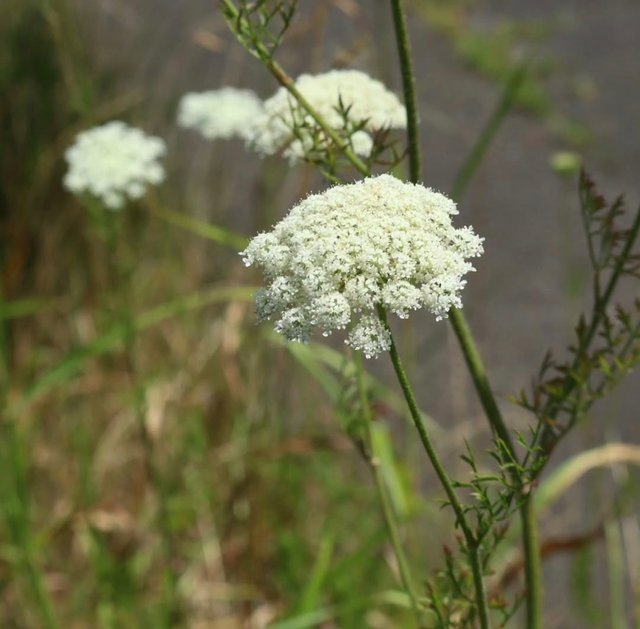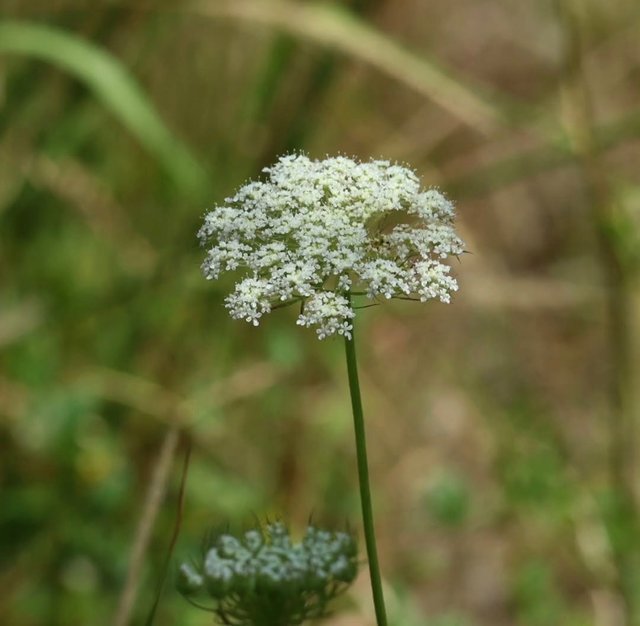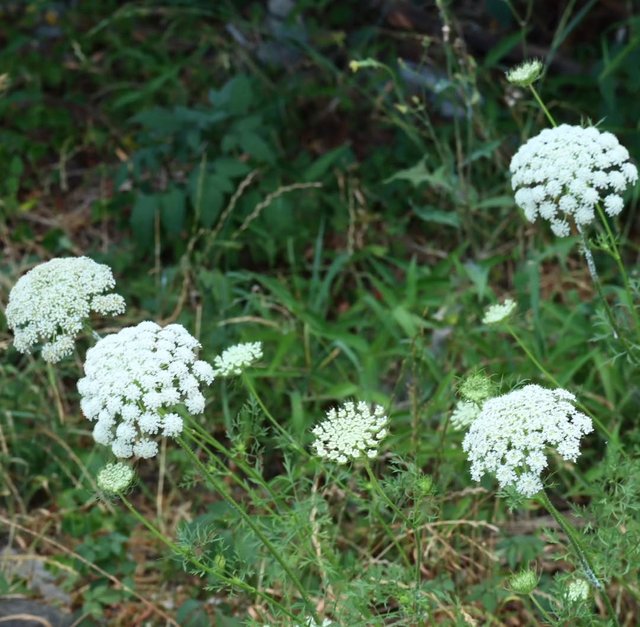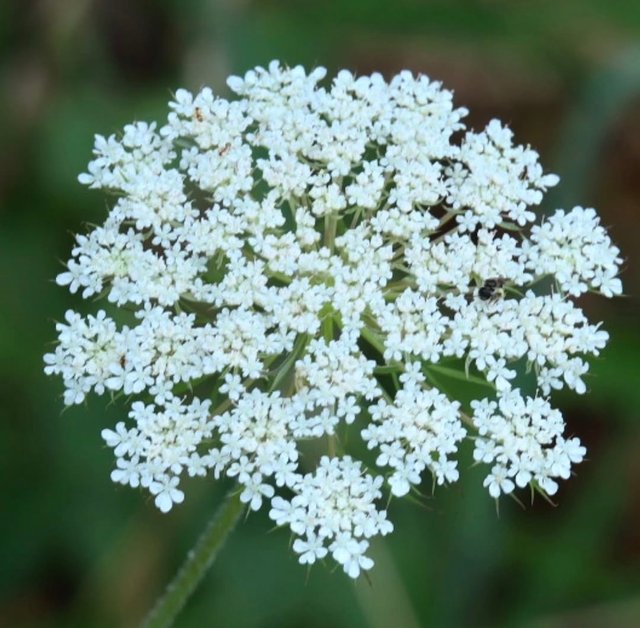Wild Carrot
Often overlooked by casual passersby, Wild Carrot, also known as Queen Anne’s Lace, is one of nature’s most elegant and fascinating plants. This humble, lace-like flower may seem simple at first glance, but it carries a rich botanical history, a unique ecological role, and even some hidden medicinal secrets.Wild Carrot belongs to the Apiaceae family and is the wild ancestor of the domesticated carrot. It grows up to 3 feet tall and produces delicate, flat-topped clusters of tiny white flowers, often with a single dark purple or reddish floret in the center—a mysterious signature often said to represent a drop of Queen Anne’s blood from when she pricked her finger while sewing lace.
The domesticated carrot we enjoy in salads and stews today is a cultivated form of Daucus carota subsp. sativus. Wild Carrot, by contrast, is tougher, more aromatic, and has a much smaller root that’s woody and white—not particularly edible in its mature form.Wild Carrot is native to Europe and southwestern Asia but has naturalized across North America, where it thrives in meadows, roadsides, and disturbed soils. It blooms typically from late spring through early fall.
Wild Carrot has inspired folklore, poems, and even fashion. The name Queen Anne’s Lace is linked to multiple tales, most famously to Queen Anne of England, who was known for her fine lacework. The crimson dot at the center of the bloom is often interpreted as a drop of her royal blood.It’s also considered a symbol of sanctuary, delicate strength, and quiet rebellion—thriving in wild places, uncultivated, yet exuding unmatched grace.



